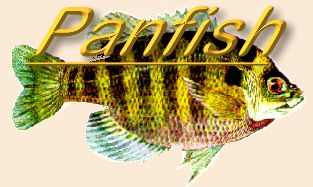WHERE DID THEY GO?
I had a chance to go to a pond where I could take the canoe. This is an opportunity not to be missed so the canoe, anchors, paddle and fishing equipment went into the truck, and then I was off to the pond. I had to park about 20 yards from the pond so I got all the stuff into the canoe and hauled it near the pond. I always try to make a few casts to make sure there are no fish near the shore where the canoe will go in. The two rods had a black boa yarn fly and a palmer chenille fly on them.
I tried each of these a few times and nothing happened. I got the canoe down and move out on the pond. There was a slight breeze, barely rippling the water, but it was enough to move the canoe. I dropped the anchor so I could do some casting without moving.
I tried the flies with different depth with different retrieves and nothing seems to be helping. So it was time to move and see if things would be better in another spot. It was a great theory that did not work out.
I changed the flies to an yellow Only and a live marabou damsel pattern. I tried the damsel as there were some dragon flies around the edge of the pond. I cast in this same area and got one bluegill on the damsel pattern. The fish hit the fly as soon as it touched water, but no repeat of this on several casts around the canoe.
I moved to where there was some deeper water off a break-line. I was hoping there would be some fish there. I cast the flies in that area and found some bass. The fish werefrom 8 to 12 inches long, but I could not find any other fish in that area.
I moved again to where the water is the deepest in the pond. I wanted to cast the flies there and see if any fish could be drawn up. I got one more bluegill in that area. Again the strike was just as the fly hit the water.
I moved the canoe again. There is a place in the pond where some limbs from an oak tree were drug in and anchored before the pond filled. This is a good place to lose flies, I know because I have lost them here before. It is also a good place for fish to try to dive into cover, which causes some fly loss. However, you can't catch what you don't hook. With this in mind the first casts are shallow in the water column in this area. I wanted to see if there were any fish that would come up. This area almost always has fish in it and on the third cast I got a crappie on the palmer chenille fly.
A few more shallow casts did not do much. Then the mind begam to work a little. Damsel nymphs would be swimming toward the shore, not away so it was worth moving so I could bring this fly in toward the shore. It could not be any slower than what has been happening before. The other thing is that let me retrieve the flies in the same direction the branches are pointing. Little less chance of losing flies.
On the second cast, when the fly was a little deeper, and using a lift and drop retrieve, a nice crappie took the fly. I got to repeat these results a dozen more times while fishing over this area. I used a fairly slow retrieve and made several casts between each fish.
This wind had been slowly increasing the whole time and it was getting to the point where it was getting hard to cast. There was so much wave action that it was hard to tell if the fly line was moving so I could not tell if the fish were biting. It was also starting to get warm so I headed home. I was still wondering where all the fish in this pond went. All the previous trips had many more fish caught than this. A reminder of why it is called fishing and not catching.
However, I had fillets to eat and a few to share.
Hope you can get out on the water.
Rick
